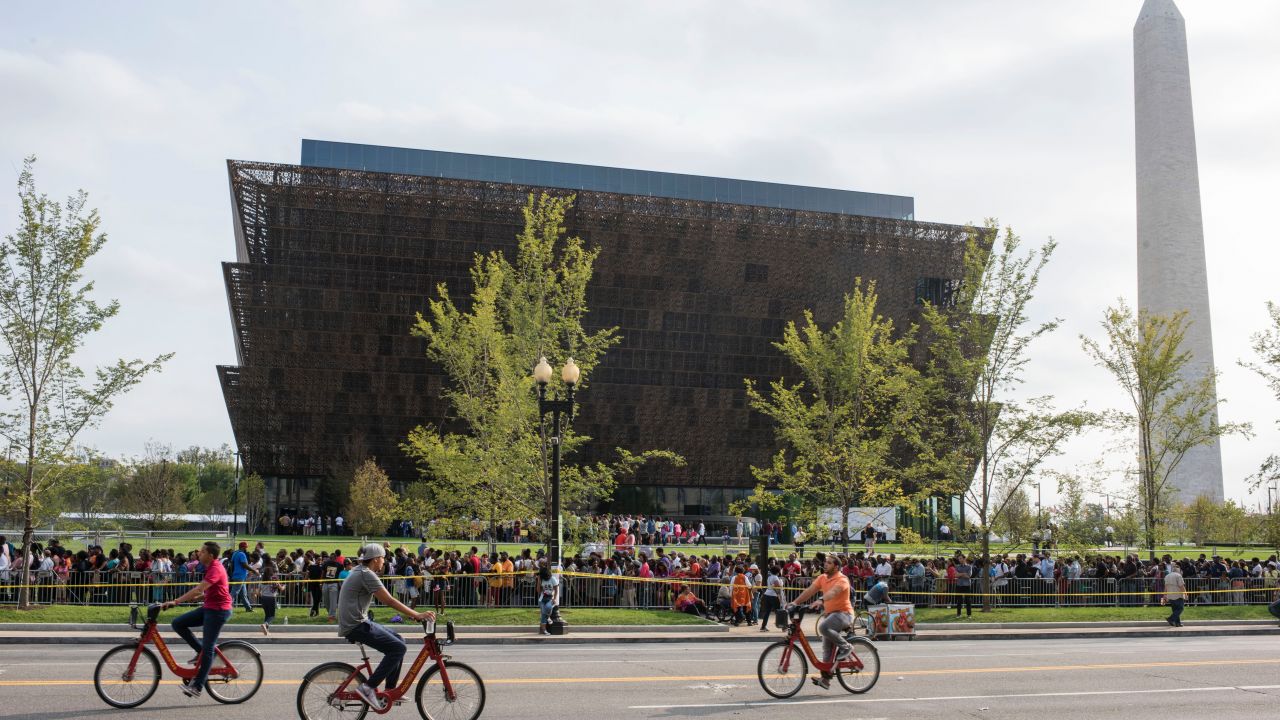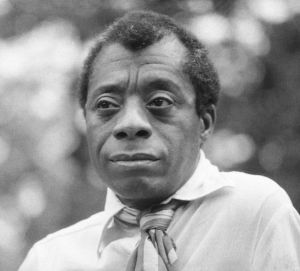
Crowds lined up on the opening day of the new National Museum of African American History and Culture in Washington, DC. (Photo by Marvin Joseph/The Washington Post)
“The great force of history,” James Baldwin once wrote, “comes from the fact that we carry it within us, are unconsciously controlled by it in many ways, and history is literally present in all that we do. It could scarcely be otherwise, since it is to history that we owe our frames of reference, our identities, and our aspirations.”

Writer James Baldwin (Photo by Allan Warren (Own work) [CC BY-SA 3.0 or GFDL], via Wikimedia Commons
Though written long ago, Baldwin’s words about the power and complexity of history certainly inform an understanding of the new National Museum of African American History and Culture that opened in Washington just last weekend. The museum is a testament to the significance and weight of African-American culture, life and history; it is also, as the museum’s director, Lonnie Bunch, has argued, a “clarion call to remember” the histories and voices of people, both known and unknown, who helped shape the nation.
At this weekend’s opening ceremony, the mood resonated to that clarion call, as speakers emphasized the museum’s mission to explore the “resiliency, optimism and spirituality” of African-Americans while helping to shape the public conversation on African-American history. Standing in front of the striking museum building (400,000 square feet clad in dark bronze filigree and located among the other historic icons of the National Mall), President Barack Obama opened his speech by locating power in the story of how African-Americans have “wrested triumph from tragedy” in the service of American values and ideals of democracy. Explicit in the president’s remarks was the weight of this historical moment; explicit in the president’s presence was the transformative power of history. That was also evident in the museum’s very creation: the steadfastness of museum staffers and supporters in the face of consistent political opposition, the dedication to the grueling work of assembling the collection and the painstaking curation of more than 36,000 ephemera and artifacts related to African-American life and culture.
— W.E.B. DuBois
And yet, alongside the celebrations and triumphant symbolism of this moment, there lurks an ever-present question on race, once famously posed by W.E.B. DuBois: “How does it feel to be a problem?” It is a persistent and omnipresent question, one that the president of the United States tried to address in his speech at the museum opening:
“We’re not a burden on America, or a stain on America, or an object of pity or charity for America,” Obama said of African-Americans. “We’re America.”
Still, DuBois’ haunting query has been thrown into sharp focus in the past few days, with the opening of the African-American history museum taking place against the backdrop of protests and unrest in Charlotte, North Carolina over the fatal police shooting of Keith Lamont Scott (which happened within days of the fatal police shootings of Terrence Crutcher in Tulsa, Oklahoma). “How does it feel to be a problem?” is an uneasy question that continues to hang over American democracy, pointedly probing the significance of citizenship in a nation that continues to have second-class citizens. Most recently, groups like Black Lives Matter and We the Protesters have gained national attention for making this question a central part of their national critique of institutionalized racism and inequality; more quietly, so too have many African-Americans faced similar concerns in their day-to-day lives and activities.
If we view the opening of a museum of African-American history and culture on the National Mall as a symbolic event rooted solely in narratives of resiliency and triumph, a jarring sense of dissonance emerges in the face of the continuing protests in Charlotte and beyond. How do we square this magnificent site with the fact that the nation’s founding ideals, including the promise that all men are created equal, have yet to be fully realized for all of its citizens? In his piece on history, Baldwin argued that this “peculiar” condition emerged largely from the country’s inability to have an honest dialogue on race; most of the nation’s citizens, Baldwin mused, “do not dare examine” the actual history and consequences of racial inequality, because doing so would disrupt the essence of the American Creed.
But when we push beyond the boundaries of symbolism, we see the disruption of these public narratives is part of the purpose of the new museum. Its role, especially against the backdrop of unrest and racial inequality, is to contextualize and complicate the past to inform the present, to help the public wrestle with the flaws of our nation and to explore the uncertain and fitful progress toward equality — in the present as well as in the past. In this respect, the opening of the museum and the Charlotte protests are not at odds. Instead, they exist as reflections of an unfinished history, and the complex ways in which our nation has refused to address its racial past. Just as the election of the nation’s first African-American president did not usher in a “post-racial” society, neither will the opening of a museum.
The ephemera and the collections of the museum are, however, critical to this broader goal of disrupting traditional narratives of progress and uplift. Exhibits like the one featuring Emmett Till’s casket challenge the myth of American egalitarianism and force viewers to wrestle with the pain of violence and inequality that persists in the present. That the museum ends not with Barack Obama’s ascent to the White House, but instead with an exhibit devoted to Black Lives Matter and social and political protest in the present, is a testimony to the museum’s interest in revising the traditional and uncomplicated story of American history. Charlotte is a piece of the story being explored, and the museum offers a way of contextualizing and reckoning with the surrounding history as the nation is living through it.
In his speech on Saturday, Obama observed that the new museum is a “place to understand how protest and love of country don’t merely coexist but inform each other,” providing “context for the debate of our times.” In truth, the museum offers an opportunity for the nation to do even more than that. In documenting the nation’s racial past, it exists as a site that, by way of the history it presents, challenges conventional understandings of power, progress and democracy. And it is these challenges that make the museum such an important and necessary addition not only to the National Mall, but also to a broader national movement on race in America.




